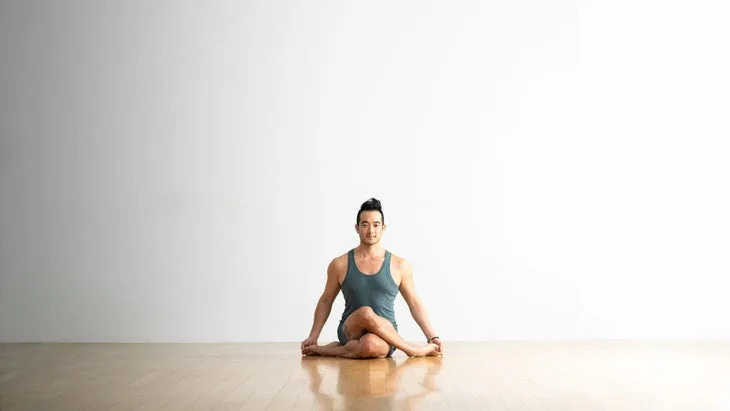From philaacupuncture.com
Treatments for sciatica can take the form of home treatment methods, as well as professional types of care. Effective, lasting relief of sciatica and sciatica-like symptoms typically does not require surgery, although in a few cases surgical intervention may be the best option. It should be kept in mind that no treatment for sciatica pain can be relied upon to be a permanent cure. Long-term management of the underlying causes for a given person’s sciatica symptoms is usually needed to prevent sciatica from recurring repeatedly and growing worse as time goes on.

Listed below are the available options for treatment of sciatica pain.
Medications
- The first line of treatment for sciatica nerve pain is often medications, whether it be prescription or non-prescription. Among the most popular medications are pain relievers, muscle relaxants, and steroidal and non-steroidal anti-inflammatory drugs. The most commonly used medications for the treatment of sciatica may produce side effects that can be difficult for some people to tolerate, and they usually fail to provide complete relief of symptoms.
Spinal injections
- The next line of treatment for sciatica nerve pain is often spinal injections, which are usually done with some type of steroid medication. Injections are used to decrease swelling from inflammation around the involved nerves to diminish pressure and irritation. Although injections can be very effective when inflammatory swelling pressure is a significant cause of nerve irritation, they may be ineffective when the nerve is irritated by direct contact from a bone spur, disc herniation, or some other structure. Most doctors will limit the number of steroid injections for a given patient because when overused, steroid injections may cause relatively severe side-effects.
Physical therapy
- Physical therapy treatments for sciatica may include ultrasound, electrical muscle stimulation, and other passive therapies, as well as active exercises for rehabilitation. In the early stages of care, passive therapies are used to ease symptoms, while rehabilitative exercise is used later on to correct underlying structural imbalances and distortions that would otherwise lead to recurrences of sciatica.
Surgical treatment
- Surgical treatment of sciatica pain should be considered only as a last option when everything else has failed. The vast majority of sciatica sufferers can recover without surgery, but in cases of severe disc herniation or rupture, severe degenerative spinal arthritis, or in cases where a cyst or tumour is producing pressure on one or more of the nerve roots that form the sciatic nerve, surgical intervention may be the only option that will potentially provide long-term relief of sciatica symptoms. Note, surgery is not a reliable permanent cure for sciatica.
In the long run, natural remedies for sciatica-like acupuncture, home remedies, and daily exercises is the best treatment for sciatica that typically provide better overall results than other forms of treatment for sciatica pain.
If you feel pain in your lower-middle back when you bend or stretch and it radiates down to your legs, then you might be experiencing sciatica.
What is sciatica?
Sciatica is a pain manifestation which resulted from the irritation of the sciatic nerve. The pain usually begins at the lower back and may extend down to the calf and foot depending on the affected nerve root. Sciatica is not a disorder by itself but a symptom resulted from another medical condition. People who are usually affected by sciatica are suffering from a herniated disc. Any factor which directly inflicts irritation and inflammation on the sciatic nerve produces the symptoms of sciatica.

The sciatic nerve is the largest in the body. Its nerve roots run from the lumbar spinal cord located at the lower back extending through the buttocks, hips, and lower limb. When this nerve becomes inflamed or irritated it produces pain that resembles a leg cramp. It makes neither sitting nor standing difficult due to the intensity of pain it inflicts. Typically the pain is aggravated when sitting, sneezing, or coughing. Pain in acute sciatica usually lasts for four to eight weeks and diminishes on its own depending on the causative agent.
Sciatica symptoms
These symptoms of sciatica are usually only on one side and maybe one of, or a combination of:
- Pain that runs from the lower back down the back of the leg or buttock. The pain can vary from a mild ache to a sharp, burning, or shooting pain that can become debilitating.
- Pain that is worse when sitting.
- You may experience numbness, tingling, or weakness in the affected leg.
- The pain can be made worse by coughing or sneezing.
- Sharp pain that can make it difficult to walk.

The sciatic nerve is the largest in the body and is about the diameter of your thumb. It runs from the lower back down your leg and as well as being the biggest, it is also the longest nerve in the body. It is derived from the spinal nerves that exit the spine from L4 through to S3 joining together.
The symptoms of sciatica occur when any one of these nerve roots that form the sciatica nerve is being compressed or irritated in the lumbar spine. This is what people classically think of as a ‘pinched’ nerve. It is not usually the result of a single injury, but an accumulation over time.
Most cases of sciatica will go away over time. However you should seek urgent medical attention if the pain has a sudden onset, is the result of a bad injury such as a car accident, it is not getting better after a week, or if you ever have trouble controlling your bowel or bladder
Sciatica causes
Interestingly, sciatica is not a specific condition, it is simply a catch of all medical term applied to a constellation of symptoms to describe a state the back pain sufferer is in. In this case, sciatica is used to describe a patient’s complaint of pain radiating across the buttocks, down the leg, and into the feet and toes along with the associated tingling and/or numbness.

Sciatica may be caused by several conditions, from stress and trauma at a specific location on the spine, the lower back, or lumbar curvature, to a more generalized condition such as obesity or pregnancy. There are several other conditions associated with sciatica, all requiring varying degrees of medical intervention and treatment. Some of the conditions likely to present with sciatica are:
- Osteomyelitis: An infection of the bone or bone marrow. Osteomyelitis may be debilitating and in extreme cases may even cause death. It is difficult to diagnose and may go undetected for a long time unless appropriate blood tests are ordered and the medical practitioner is well trained in infectious diseases affecting the bones.
- Tumours on or near the spine: Tumours, particularly tumours or abnormal growth (e.g., scar tissue) affecting the nerves or nerve roots as they exit the spinal canal and intervertebral foramen, will sciatic nerve pain or sciatica.
- Spinal stenosis: This is a narrowing of the spinal canal and/or intervertebral foramen. Any narrowing of a structure can be defined broadly as stenosis. The stenosis, the narrowing affects and/or obstructs the pathway for nerves, thus exacerbating pain…in this case, creating the sciatic nerve pain associated with sciatica.
- Trauma: Trauma and stress go hand in hand when it comes to back pain and sciatica. Trauma may be localized, meaning the spine will take the brunt of the stress at a specific location, or it may be generalized and affect several levels simultaneously. The better equipped we are in terms of muscle strength, muscle balance (or imbalance), and the other factors affecting spine health, the better equipped we will be to handle appropriate levels of stress. The IVDs are remarkably resilient and very strong but if the discs undergo change as a result of any of the factors listed above, or the traumatic event is profound enough, damage to the spine may occur; and, sciatica may be the outcome. In this case, a medical practitioner should always be the first step in any bad back treatment strategy.
In reality, any one of the factors above, or several of the above-mentioned conditions together, may cause sciatica. Sciatica is, once again, the presentation of a specific type of pain. The actual condition causing the sciatic nerve pain may be any of the above or several other conditions not discussed here; these are some of the main ones.
Sciatica pain a medical condition with associated symptoms of pain along the leg and hip, affecting one side of the body. Sciatica pains may be a result of spinal compression, bone spurs on the spine of a herniated disc. The pain experienced may come as aching, shooting, or burning pain and it could be a combination of these pains.
Sciatica pain has some risk factors that can be avoided while others cannot be avoided. Factors such as age, back injuries, spinal tumours, back strain due to pregnancy, and diabetic nerve damage are not preventable risk factors.
Sciatica pains sufferers tend to live with the condition undiagnosed for months and sometimes years in mild cases, assuming it to be normal cramping. Some of the possible signs experienced by sufferers include the following.
– Burning, searing or tingling pain down the leg
– Pain gets worse while sitting and it is felt in the buttocks or leg
– Pain in one side of the buttocks
– Difficulty in moving the leg or foot and also difficult to stand.
Sciatic nerve pain is a result of structural impingement or the compression of the sciatic nerve
in the lower back of the body. This occurs either due to a long term degeneration of the lumbar area or an injury to the lower back. The location where the pain is felt depends on where the compressed sciatic nerve is located. Sciatica pain can be a result of any of these conditions
- Lumbar spinal stenosis
- Degenerative disc disease
- Pregnancy
- Herniated lumbar disc
- Spondylolisthesis
Natural remedies for sciatica
Natural remedies for sciatica pain can be very beneficial but do not forget to include a good diet, regular exercise and you must keep in mind that you are aiming to improve your overall health. If you want to avoid having this problem occur again in the future you may want to sleep on a firm mattress. Always sit and stand in good posture, and avoid lifting heavy objects as much as possible. It is the small things that cause sciatica pain in the long run, so be sure to make this a part of your everyday routine.

Listed below are natural remedies for sciatica.
Home remedies for sciatica – most popular natural treatment for sciatica
Assuming that you have sciatic back pain and you are confident that you have nothing serious to be anxious about, the following suggestions may help you deal with your sciatica with fast home treatment. Listed below is a home treatment for sciatica
- Back exercise is a treatment for sciatica at home that is very effective, although it may go against your instincts to engage in physical activity while your back or legs hurt, low-impact exercises like water aerobics, stationary biking, and yoga can be quite effective at reducing symptom severity and strengthening your back to prevent future back issues. Stronger back muscles also help support the spine and alleviate pressure on spinal nerves which can reduce the frequency and intensity of sciatica episodes.

- Another treatment for sciatica at home in a form of physical activity that may alleviate sciatica symptoms is stretching. Stretching should be performed slowly and gently; stop immediately if you notice any pain. You may try pulling your knees up to your chest, seated hip stretch, or seated spinal twist. The purpose of these stretches is to loosen the buttocks, hamstrings, and calves which can exert pressure on the sciatic nerve.
- Ice and heat are home remedies for sciatica that can alleviate many of the symptoms that accompany sciatica and accelerate the healing process. Applying ice for 15 minutes can numb the affected area, while heat will increase blood flow and improve healing. These applications can also reduce muscle spasms which are common among sciatica patients.
- If you work at a desk or in a bent position for much of the day, pay close attention to your posture. You should try to sit with your head aligned with your hips. You should also take frequent breaks from sitting to relieve strain on your spine.
Massage – essential natural treatment for sciatica

Deeper massages or trigger point therapies are natural remedies for sciatica that have shown great success in treating muscle spasms, pain, and numbness in the legs and toes. Herbal oils and essential oils also give good results. Massage is also one of the best treatments for sciatica pain.
Herbs and Oils popular natural treatment for sciatica
Herbs and oils are natural remedies for sciatica that have beneficial effects, and many of them can help relieve pain and reduce inflammation. They can be found in capsules, ointments, liniments, and infused oils. You can also make tea from fresh or dried herbs, or use elixirs, tinctures, and essential oils for pain relief.
Listed below are herbs for sciatica
Celery Juice
- You can try blending celery and make a juice out of it. You can also add carrots to the mixture. This can provide immediate relief.
Elderberry Tea
- This herbal remedy, when taken in tea form, can stimulate the muscles and help it relax. This will then help reduce inflammation.
Garlic
- Garlic is one of the herbal treatments for sciatica pain that contains Vitamin B1 and B-complex that significantly reduce any form of pains and aches. This also improves blood circulation to prevent blood clotting.
Acupuncture for sciatica #1 natural treatment for sciatica
This alternative treatment involves inserting hair-fine needles at certain points on the body. Acupuncture for sciatica boosts the flow of energy and also contributes to proper nerve function. You should feel some relief after the very first treatment, but many people would benefit from receiving a few sessions.

Sciatica Acupuncture is a natural remedy for sciatica that serves as one of the best treatments for sciatica with no side effects once you are done with the sessions. Acupuncture for sciatica has been proven to be more effective than most treatments for sciatica.
Acupuncture for Sciatica Nerve aims at the specific sciatic nerve to control muscle relaxation and blood flow regulation along the passageway of the pain in the leg. Acupuncture for Sciatica relieves pain and reduces inflammation at the same time.
The common treatment for Sciatica pain includes epidural steroid injection, pain killers, hot/ cold therapy, and surgery to correct structural defects in the lower back.
Alternatively, acupuncture for sciatica which is a practice developed from traditional Chinese medicine offers a gentle and safer treatment for sciatic pain, as it is common with general pain management.
How acupuncture treatment for sciatica works for Pain Relief
Acupuncture for sciatica procedure involves the insertion of tiny needles into specific points called acupuncture points on the body surface. This insertion of needles triggers a certain reaction in the nervous system which is transmitted to the brain. The brain releases natural painkillers such as endorphins and encephalin as a result of this reaction. There is also increased blood flow into the body part where the pain is experienced bringing a form of relaxation to the surrounding area.
Role of Acupuncture in the natural treatment of sciatica
Though cannot correct or heal structural defect in the lower back that is responsible for Sciatica pain, it is an effective treatment in pain management. Acupuncture for Sciatica offers relief for severe pain experienced by Sciatica patients and helps in its management for an extended period, showing significant improvement.
Acupuncture points for sciatica treatment
The acupuncture for sciatica procedure includes the placing of acupuncture needles inside the wrist/ forearm area and the lower calf/ankle area where the acupuncture points for pain management are located. These needles inserted will increase the flow of blood and bring relaxation to the muscles of the affected area which is the lumbar vertebrae and the pathway of the pain in the leg.
Some primary acupuncture points for sciatica are:
- Zhibia BL54,
- Dachangshu BL25,
- Weizhong BL40,
- Chengfu BL36,
- Fengshi GB31,
- ChengshaBL57,
- Ashi, Huantia GB30
- Yaoyangguan DU3.
Additional acupuncture points for sciatica where needles are inserted for Qi stagnation and blood stasis are Xuehai (SP10) and Taichong (LV3). Also for liver and kidney deficiency, Shenshu (BL23) and Taixi (KD3) are added. For cold and damp stasis, Yanglingquan (GB34) is added.
Conclusion on natural treatment for sciatica
Sciatica is a painful condition that requires urgent medical attention as it impacts the daily lives of the sufferer and it can be bothersome. Whether the experience is still mild or at the chronic stage, it is essential to seek help from a qualified acupuncturist. Lots of research has proved the effectiveness of acupuncture for Sciatica. The best way out is to go for acupuncture treatment to improve your mobility and quality of life, by managing your pain effectively.
https://philaacupuncture.com/natural-treatment-for-sciatica-pain/












